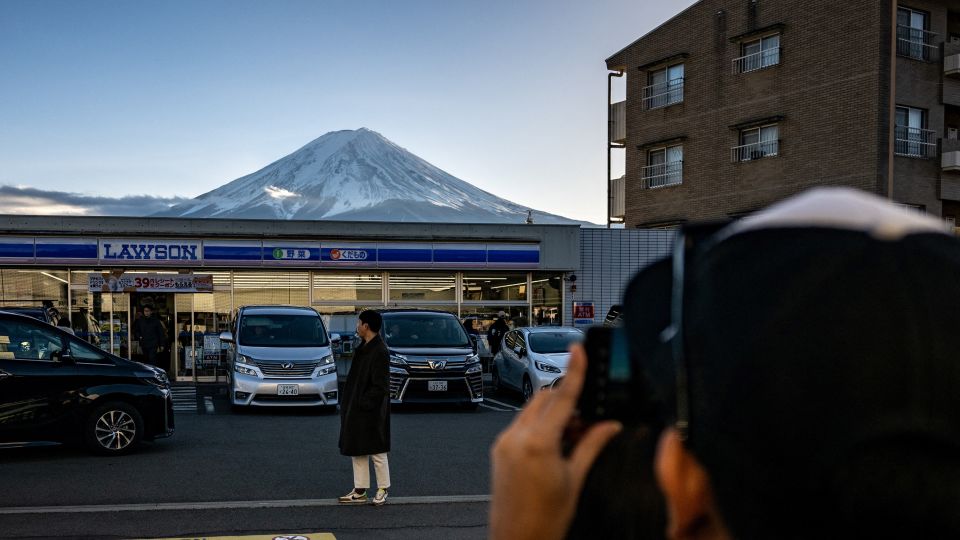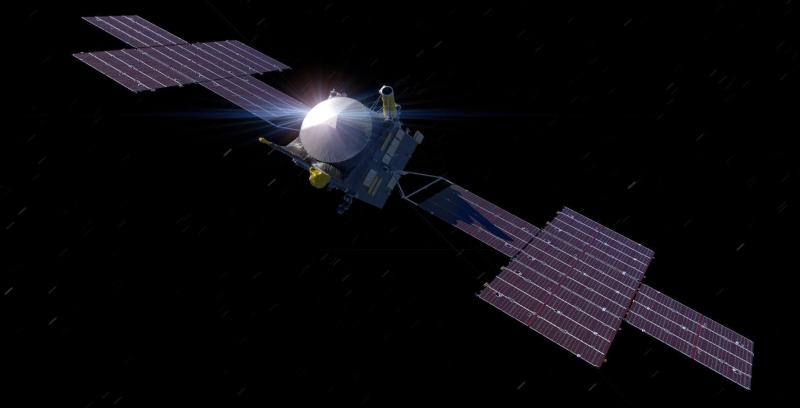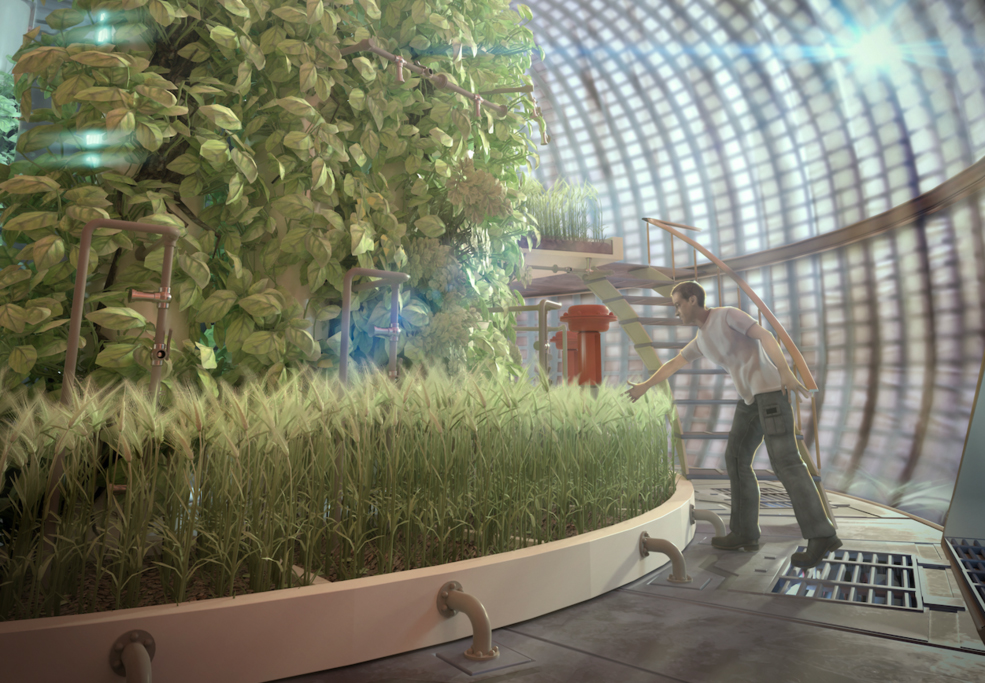뉴스&스피킹(영자신문)
하루 10분이면 영어에 대한 두려움을 극복하고 누구나 유창하게 영어를 구사하실 수 있습니다.
-
 Japanese Town Aims to Block View of Mount Fuji to Reduce Tourists But Helen Pull, a 34-year-old visitor from Britain, said she understood the local concerns. She said she had seen tourism “really ramped up” in the country. “I can see why people who live and work here might want to do something about that," Pull added.
Japanese Town Aims to Block View of Mount Fuji to Reduce Tourists But Helen Pull, a 34-year-old visitor from Britain, said she understood the local concerns. She said she had seen tourism “really ramped up” in the country. “I can see why people who live and work here might want to do something about that," Pull added.
Yoshihiko Ogawa runs an old rice shop in the Fujikawaguchiko area. He said overcrowding there had worsened in recent months, with tourists gathering from around 4 or 5 in the morning and talking loudly. Ogawa said crowds in the area also sometimes block his car.
“We’ve never thought we'd face a situation like this,” Ogawa told the AP. But he added that he was unsure what the right solution might be. “I suppose we all just need to get used to it,” he said.
I’m Bryan Lynn.View -
 Madonna Draws 1.6 Million to Free Concert on Brazil's Copacabana Beach American pop music star Madonna performed before an estimated 1.6 million people on Saturday at Brazil’s famous Copacabana Beach.
Madonna Draws 1.6 Million to Free Concert on Brazil's Copacabana Beach American pop music star Madonna performed before an estimated 1.6 million people on Saturday at Brazil’s famous Copacabana Beach.
The outdoor show in Rio de Janeiro was free to attend.
The fans turned a long stretch of the coast into a huge dance floor for the last show of Madonna’s Celebration Tour. The series began last October in London.
The so-called “Queen of Pop” began Saturday’s show with her 1998 song Nothing Really Matters. Huge cheers rose from the crowd pressed up against the barriers. Other attendees held parties in houses and hotels overlooking the beach. Helicopters and drones flew overhead, and boats floated on the water nearby.
“Here we are in the most beautiful place in the world,” the 65-year-old Madonna told the crowd. Pointing out the ocean, the mountains and the Christ the Redeemer statue overlooking the city, she added: “This place is magic.”
Madonna performed her popular songs, including Like A Virgin and Hung Up. For the introduction to another, Like A Prayer, Madonna covered her head in black cloth and held a rosary.
The star honored those who died of AIDS with the song Live to Tell. Large black and white images of the disease’s victims appeared behind her as she sang. Later, she was joined on stage by Brazilian artists Anitta and Pabllo Vittar.
Rio city officials estimated that 1.6 million people attended the show. Madonna’s official website called the show the biggest ever in her 40-year career.
“Since Madonna arrived here, I’ve been coming every day with this outfit to welcome my idol, my diva, my pop queen,” said 69-year-old retiree Rosemary de Oliveira Bohrer. She wore a gold-colored top and a black cap in a style that Madonna made popular.
Eighteen sound towers were spread along the beach to ensure that all attendees could hear the performance.
Fan Alessandro Augusto flew about 2,500 kilometers, from Brazil’s Ceara state to Rio, to attend the show. Augusto said, “It’s a unique opportunity to see Madonna, who knows if she’ll ever come back.”
“Welcome Queen!” a drink company announced with advertising around the city. Bars and restaurants prepared special alcoholic drinks named after Madonna songs. A shop known for selling Carnival clothing temporarily became a “Madonna” clothing store.
Several huge concerts have taken place on Copacabana beach before, including musician Rod Stewart’s 1994 show. It took place on New Year’s Eve as part of the city’s holiday celebration. About 4 million people attended. However, not all necessarily took in the music show.
And, in 2006, a Rolling Stones concert drew 1.2 million people onto the famed beach, the newspaper Folha de Sao Paulo reported at the time.
Madonna fan Ana Beatriz Soares attended the show Saturday. She said Madonna has made her mark across the years.
“Madonna had to run so that today’s pop artists could walk. That’s why she’s important, because she serves as an inspiration for today’s pop divas,” she said. “And that’s 40 years ago. Not 40 days, 40 months. It’s 40 years,” she added.
I’m Caty Weaver.View -
 NASA Extends Laser Communication in Space to 226 Million Kilometers The American space agency NASA has completed a new experiment that sent data over 226 million kilometers in space. The result marks a major improvement over previous tests that measured data transfers over 31 million kilometers.
NASA Extends Laser Communication in Space to 226 Million Kilometers The American space agency NASA has completed a new experiment that sent data over 226 million kilometers in space. The result marks a major improvement over previous tests that measured data transfers over 31 million kilometers.
The method is known as Deep Space Optical Communications (DSOC). The high-speed transfer technology uses lasers to send large data files over very long distances. NASA is looking to the method to improve, or upgrade, existing communication technology.
Traditionally, NASA has depended on radio communications to send data back and forth through space. But this method has a limited bandwidth, meaning at a certain point the system can no longer effectively process data. So, the agency is seeking to use the new method to support new technologies and planned trips to the moon and other places.
NASA officials say the DSOC system will be able to transfer huge amounts of science data through space. This is especially needed for large data files, as well as high-quality images and videos sent from space.
The DSOC system is based on laser technology. Laser communications are also known as optical communications. NASA explains that the technology will permit “up to 100 times more data” to be sent back to Earth than current radio wave systems.
“Much like fiber optics replacing old telephone lines on Earth as demand for data grows, going from radio communications to laser, or optical, communications will allow increased data rates throughout the solar system,” NASA said in a statement.
NASA said the laser system works with signals that exist at near-infrared wavelengths. Data transferred by laser takes the form of bits – the smallest pieces of data a computer can process. These bits are contained within the laser’s photons.
NASA is testing the DSOC on its Psyche spacecraft. Psyche was launched in October 2023 on its way to observe a mostly metal asteroid. The experiments involved a device aboard Psyche. It was able to send data to and receive data from a telescope in California.
The agency estimates it would take about nine weeks to transmit a complete map of Mars back to Earth with current radio frequency systems. But with a laser-based method, the time would be cut to nine days. Also, laser communications equipment is smaller and requires less energy.
Laser-based communication has already been demonstrated in low Earth orbit and on the moon. But the research team working on the DSOC project said this is the first time the method has been successfully tested in deep space.
Meera Srinivasan is a project leader at NASA’s Jet Propulsion Laboratory in Southern California. She said in a statement the system was able to transfer about 10 minutes of data during an experiment on April 8. Srinivasan said the result represented an important new “milestone” for the project.
The asteroid Psyche is traveling to is also called Psyche. It is believed to be made mostly of metal. NASA expects the spacecraft to travel about 3.6 million kilometers over six years to reach the asteroid. Developers of the system say when Psyche is at its farthest point from our planet, the DSOC system’s photons will take about 20 minutes to travel back to Earth.
I’m Bryan LynnView -
 Scientists Explore How to Grow Crops on Mars For future humans to survive long periods on Mars, growing food on the planet is a must.
Scientists Explore How to Grow Crops on Mars For future humans to survive long periods on Mars, growing food on the planet is a must.
It would be too costly and risky to rely upon rocket deliveries to meet the food needs of colonists. With this in mind, scientists are exploring ways to improve space farming.
At Wageningen University & Research in the Netherlands, researchers work in a controlled greenhouse. They have identified a way that could improve crop production in simulated Martian soil, with different crops grown together. The method is called "intercropping.” It was first invented by ancient Maya farmers in what is now Central America.
In their experiments, the researchers grew cherry tomatoes, peas and carrots together in small, round containers called pots. Tomatoes grown in this way produced about double the amount of tomatoes grown alone - or "monocropped" - in the same simulated Martian soil. The tomatoes were also bigger. They flowered and matured earlier, gave more fruit per plant and had thicker stems.
The amounts of peas and carrots did not increase with intercropping.
Rebeca Gonçalves is an astrobiologist and lead writer of the study published on Wednesday in the publication PLOS ONE. She said the research is the first time the intercropping technique was used in space soil.
"And the fact that it worked really well for one out of the three species was a big find, one that we can now build further research on,” Gonçalves added.
The crops were grown in simulated Martian regolith, a soil with no organic matter. Created by researchers from the American space agency NASA, it is a near-perfect physical and chemical match to real Martian soil.
The researchers added useful bacteria and nutrients. They also controlled the gases, temperature and humidity inside the greenhouse to match conditions expected in a Martian greenhouse.
For now, human bases on Mars are only seen in movies. But NASA, for example, is developing ways to send people to Mars in the 2030s.
"Mars is really far away. A flight now would take about nine months. If you want to live there as humans, you will have to grow your own crops at the site," said study co-writer Wieger Wamelink. He is a plant ecologist at Wageningen and head of B.A.S.E., a company that develops lunar and Martian greenhouses.
"Flying in food is very costly and also vulnerable… Our main goal is to use as much as possible from the resources at the site," he added.
Intercropping involves growing plants with properties that could help each other grow. The method makes the best use of resources including water and nutrients.
The researchers said the tomato plants in intercropping may have benefited from being close to the pea plants. That is because the peas are good at turning nitrogen from the air, with the help of bacteria introduced into the soil, into an important nutrient.
The carrots produced fewer crops from intercropping and the peas had no change, Gonçalves said.
"It is very important how you select the crop species that you combine, because the tomato did profit from the peas, but the carrot most certainly did not. This was probably due to lack of light. The tall tomato and pea plants did out-compete the carrot by taking light from it," Wamelink added.
Overall, the tomatoes, peas and carrots grew well, though not as well as in Earth soil in the same greenhouse.
I’m Dan Novak.View -
 Report: 2023 a Big Year for Renewable Energy A recent report says that 2023 was a record-breaking year for renewable energy sources.
Report: 2023 a Big Year for Renewable Energy A recent report says that 2023 was a record-breaking year for renewable energy sources.
Ember, a research group based in London, reported that, for the first time, 30 percent of electricity produced worldwide was from clean energy sources. And billions of people are using clean energy sources daily as the number of solar and wind farms continues to grow.
Hydropower
Last year, hydroelectric dams produced most of the clean energy sources - as in most years. Yet dry weather conditions, or droughts, in India, China, and North America meant hydropower hit a five-year low. Research shows climate change is causing droughts to develop more quickly and be more severe.
People used more electricity than ever last year, about 2 percent more, an increase of about as much as Canada uses in a year. Some of this new demand was for heat pumps, which are an efficient way to both heat and cool buildings, and for electric vehicles. The demand was also for electrolyzers, special machines used to get hydrogen out of water, for energy. These are all technologies that provide solutions to climate change.
Other increased demand was for electricity to feed new data centers and for air conditioning as places around the world become hotter.
Solar
Solar made up the biggest part of new clean energy last year. More than twice as much solar power was added as coal power. It was the 19th year in a row that solar was the fastest-growing source of electricity generation. A large increase in solar installations happened at the end of the year and the report predicts 2024 will see an even larger jump.
China added more renewable energy than any other country last year — 51 percent of the new solar power and 60 percent of the new wind power worldwide.
China, the European Union, the United States and Brazil together were responsible for 81 percent of new solar generation in 2023.
Coal
Despite the growth in clean energy, fossil fuels like coal still made up most of the electricity generated worldwide last year.
The report said some countries burned coal to make up for the loss of hydroelectric power they experienced when drought caused their water supply to dry up.
China was responsible for 55 percent of coal generation worldwide. And 60 percent of China’s electricity generation came from coal. China, India, Vietnam and Mexico were responsible for nearly all of the increase.
The International Energy Agency says fossil fuels release more carbon dioxide to produce electricity. And scientists say fossil fuel burning needs to decrease quickly to protect Earth’s climate.
Experts expect the world to use even more electricity in 2024. However, as renewable energy generation is predicted to grow, it could mean a 2 percent drop in energy generated from fossil fuels.
I’m John Russell.View

